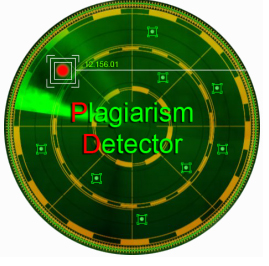CULTURAL EQUIVALENCE IN BOEMI MANUSIA AND THIS EARTH OF MANKIND NOVEL BY PRAMOEDYA ANANTA TOER
Abstract
This research aims to analyze the translation of words with cultural terms in Boemi Manusia into This Earth of Mankind novel. In carrying out the research, qualitative method and library research were employed. The data were words classified as nouns with cultural terms in the novel. This is because expressions related to culture are usually in this category. The researchers examined whether the translation has transferred the messages of the data or resulted with different implications. The researchers also used the concept of cultural equivalence from Baker (2008). The finding of this research shows that the translation of Boemi Manusia into This Earth of Mankind novel contained words and concepts that do not exist in English. The concepts in the target language do not have equivalents in English because those concepts only exist in Indonesia. The researchers found out that a number of equivalent words were used in order to introduce Indonesian cultures to the readers who mostly are not Indonesians.
Keywords: Boemi Manusia, cultural concept, equivalence, translation
Full Text:
PDFReferences
Afrianto. (2018). Poem from linguistic point of view. Linguistics, Literature, & Language Teaching Series: An Overview. Bandar Lampung: Universitas Teknokrat Indonesia.
Al-Masri, H. (2009). Translation and cultural equivalence: A study of translation losses in Arabic literary texts. Journal of Universal Language, 10(1), 7-44.
Amelia, Dina. (2016). Indonesian literature’s position in world literature. Teknosastik: Jurnal Bahasa dan Sastra, 14(2), 1-14.
Ardiansah, J. N. (2008). The effects of using translation strategy to overcome cultural problems in translating words related to tools in Bumi Manusia by Pramoedya Ananta Toer into This Earth of Mankind translated by Max Lane. Undergraduate Thesis. Yogyakarta: Universitas Sanata Dharma.
Baker, Mona. (2018). In Other Words: A Coursebook on Translation. London: Routledge.
Bouziane, K. (2015). Cultural Equivalence in the Translations of Paul Bowles-The Case of: For Bread Alone (2006). Arab World English Journal (AWEJ) Special Issue on Translation, (4).
Catford, J.C. (1995). A Linguistic Theory of Translation. London. Oxford University Press.
Dewiyanti, S., Yahya, M., & Rahayu, T. (2015). An Analysis of the Translation of Cultural Words in the Novel Salah Asuhan into Never the Twain. Bahasa Inggris Terapan, 1(1), 31-39.
Evayani, Widya & Rido, Akhyar. (2019). The representation of social actors in sexual violence issue in The New York Times and The Jakarta Post Newspaper: A critical discourse analysis. Teknosastik: Jurnal Bahasa dan Sastra, 17(2), 43-55.
Gharedaghi, M., Eslamieh, R., & Shahidi, H. R. (2019). Content EquivalenceAnalysis of Health News Translation: A Bakerian Approach. Theory and Practice in Language Studies, 9(9), 1198-1207.
Hanafi, Nurachman. (1986). Teori dan Seni Menerjemahkan. Ende: Penerbit Nusa Indah.
Hatim & Munday (2004). Translation, An Advanced Resource Book. London: Routledge.
Kardiansyah, M. Y., & Salam, A. (2021). Reassuring feasibility of using Bourdieusian sociocultural paradigm for literary translation study. International Conference on Language and Arts (ICLA 2020), 135-139.
Kuswoyo, H. & Siregar, R. A. (2019). Interpersonal metadiscourse markers as persuasive strategies in oral business presentation. Lingua Cultra, 13(4), 297-304.
Lane, Max.1996. This Earth of Mankind. New York: Penguin Books.
Larson, Mildred L. (1984).
Meaning- Based Translation: A Guide to Cross Language Equivalence. London: University Press of America Inc.
Lestari, Mega & Wahyudin, A. Yudi. (2020). Language learning strategies of undergraduate EFL students. Journal of English Language Teaching and Learning, 1(1), 25-30.
Mahendra, M. Yusril Ikhja & Amelia, Dina. (2020). Moral values analysis in the fault in Our Stars novel by John Green. Linguistics and Literature Journal, 1(2), 55-61.
Newmark, Peter. (1981). Approaches to Translation. New York: Pergamon Press.
Nida, Eugene A& Charles R. Taber. (1969). The Theory and Practice of Translation. Leiden: E.J Brill.
Nida, Eugene A. “A Framework for the Analysis and Evaluation of Theories of Translation” in Ikhwal Menerjemahkan. Eds. AdjatSakri. Bandung: ITB.
Novi, P., & Gulö, I. (2021). Representation of Reynhard Sinaga in BBC News and The Jakarta Post. Linguistics and Literature Journal, 2(1), 50-61.
Pranoto, Budi Eko & Afrilita, Lidia K. (2018). The organization of words in mental lexicon: Evidence from word association test. Teknosastik: Jurnal Bahasa dan Sastra, 16(1), 26-33.
Putra, Alki G.M. & Qodriani, Laila Ulsi. (2017). Connotative meaning of L.A. Bold cigarette advertisement my kind of bold version. Teknosastik: Jurnal Bahasa dan Sastra, 15(1), 36-45.
Rido, Akhyar. (2020). "Why they act the way they do?": Pedagogical practices of experienced vocational English language teachers in Indonesia. International Journal of Language Education, 4(1), 24-37.
Samanik & Lianasari, F. (2016). Antimatter technology: The bridge between science and religion toward universe, creation theory illustrated in Dan Brown’s Angels and Demons. Teknosastik: Jurnal Bahasa dan Sastra, 14(2), 18-27.
Sari, Beaty Novita & Gulö, Ingatan. (2019). Observing grammatical collocation in students’ writings. Teknosastik: Jurnal Bahasa dan Sastra, 17(2), 25-31.
Spencer-Oatey, H. (2008) . Culturally Speaking. Culture, Communication and Politeness Theory. 2ndedition. London: Continuum.
Suprayogi & Pranoto, Budi E. (2020). The implementation of a virtual exhibition project in English for tourism class for university students. Academic Journal Perspective, 8(2), 87-98.
Toer, Pramoedya Ananta. (2006). Bumi Manusia.Jakarta: Lentera Dipantara.
Unggul, G. Mekaria & Gulö, Ingatan. (2017). An analysis of gerund and to infinitive in argumentative essays. Teknosastik: Jurnal Bahasa dan Sastra, 15(1), 1-6.
Urip, R. (2012). Translating “Bumi Manusia” Novel Into English: SoProblems In Using Formal Equivalence AsA Strategy.
Wirawan, A. N., & Samanik, S. (2018). Sociopathic personality disorder in Humbert Humbert’s character of Nabokov’s Lolita. English Language and Literature International Conference (ELLiC) Proceedings, 2, 432-439.
DOI: https://doi.org/10.33365/llj.v5i1.383
Refbacks
- There are currently no refbacks.
Linguistics and Literature Journal
Published by Universitas Teknokrat Indonesia
Organized by Faculty of Arts and Education
Jl. Zainal Abidin Pagaralam, No.9-11, Labuhanratu, Bandarlampung, Indonesia
Telepon : 0721 70 20 22
W : http://jim.teknokrat.ac.id/index.php/linguistics_and_literature/index










